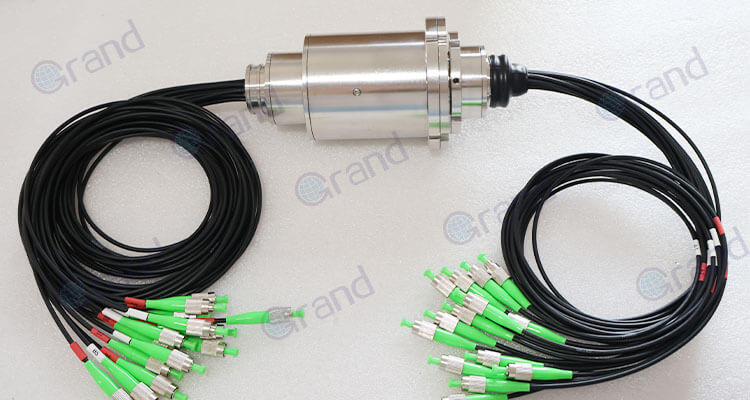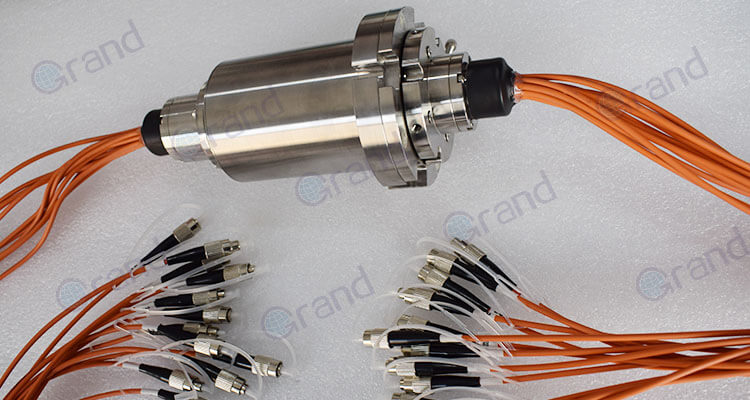Fiber Optic Rotary Joints (FORJs), also known as fiber optic slip rings, enable the continuous transmission of optical signals during rotation. They are widely used in missile guidance systems, robotics, petroleum drilling systems, medical equipment, and other fields.
The primary function of a Fiber Optic Rotary Joint is to connect one or multiple optical fibers, allowing them to rotate freely relative to each other. This requires the rotary connector to exhibit very low insertion loss, minimal variation in insertion loss, and high return loss.
Insertion Loss
An insertion loss of 3dB corresponds to a 50% reduction in signal gain. Therefore, FORJs must have relatively low insertion loss. Grand Technology’s single-channel FORJs typically feature an insertion loss of ≤1.0dB, while multi-channel FORJs generally have an insertion loss of ≤4.0dB.
Insertion Loss Variation
Due to changes in coupling efficiency, the loss experienced by an FORJ during rotation naturally varies. However, this variation must be kept minimal to prevent a degradation in the signal-to-noise ratio. When insertion loss variation is a critical operational parameter, Grand Technology’s single-channel FORJs are recommended, as they can control insertion loss variation within ≤0.5dB.

Fiber Optic Rotary Joint
Return Loss
Return loss is a measure of a component’s ability to suppress reflections. It is calculated using the formula:
RL = -10 · log₁₀(Preflected / Pincident),
where Pincident is the incident power and Preflected is the reflected power. A higher return loss value is desirable. A high return loss value (e.g., 40 dB) indicates that only a minimal amount of light is reflected back; for instance, a reflection of -45dB equates to a return loss of 45dB. Grand Technology’s dual-channel and multi-channel FORJs have a specified return loss rating of ≥40dB.
Single-Channel vs. Multi-Channel
Single-channel FORJs feature a compact structural design, long service life, high operating speeds, and lower operational costs compared to multi-channel versions. Multi-channel FORJs possess a more complex structure and require precise optical alignment. Insufficient alignment or poor optical design can not only compromise key optical performance parameters but also introduce new issues such as high wavelength-dependent loss, high Polarization Dependent Loss (PDL), high Polarization Mode Dispersion (PMD), and high crosstalk. Grand Technology’s multi-channel designs can provide customized solutions supporting up to 100 channels.
See What We Can Do

